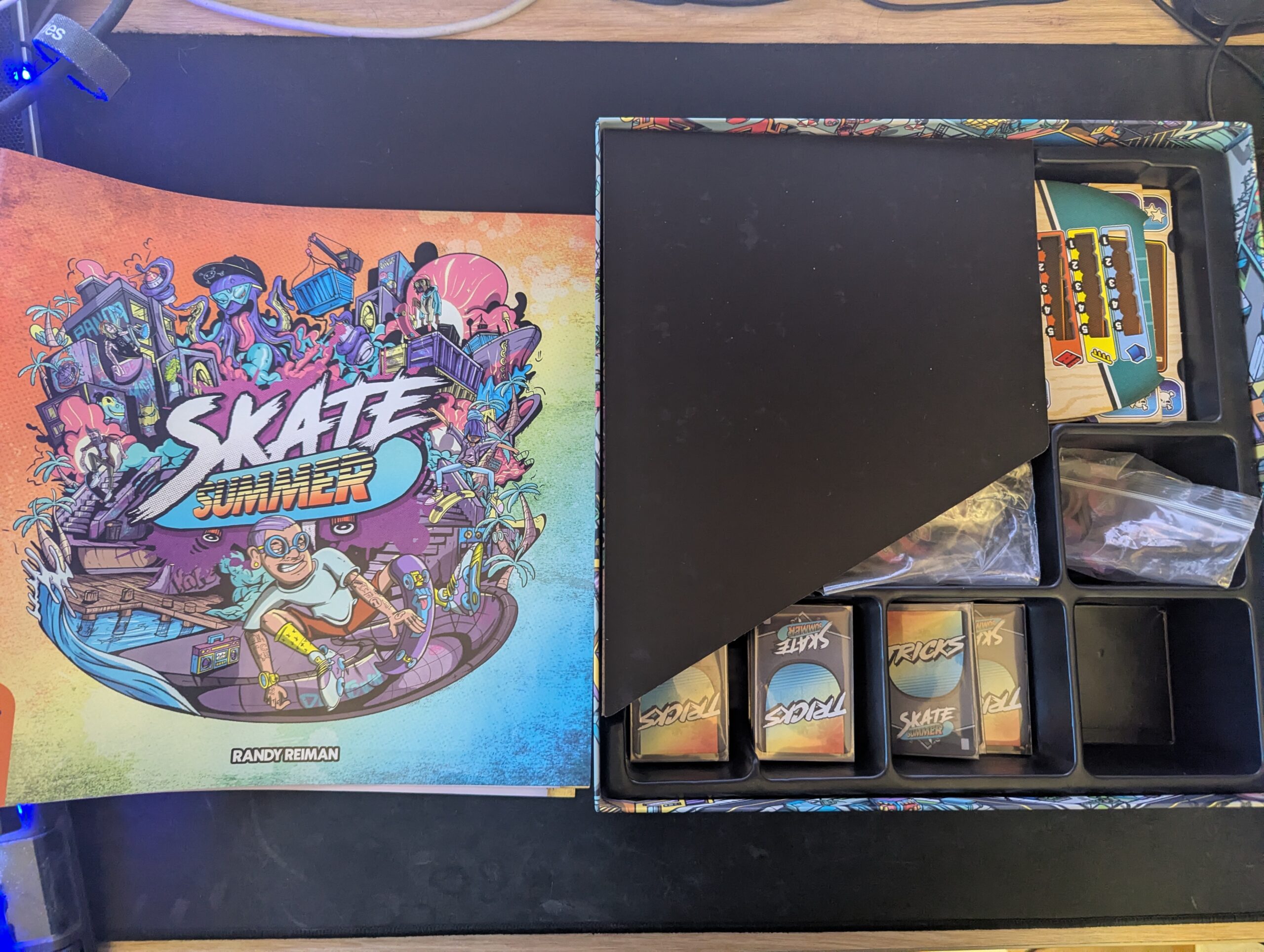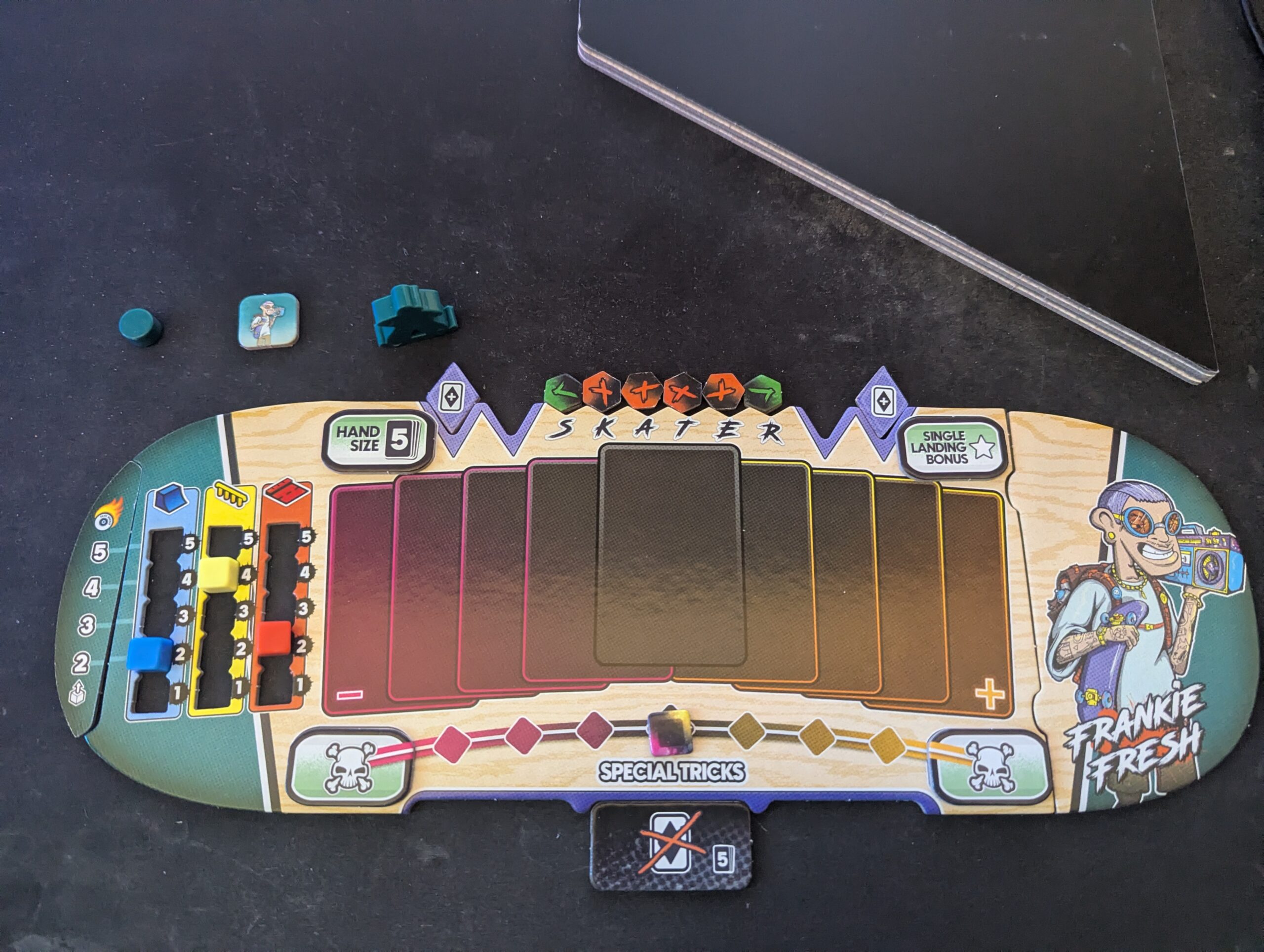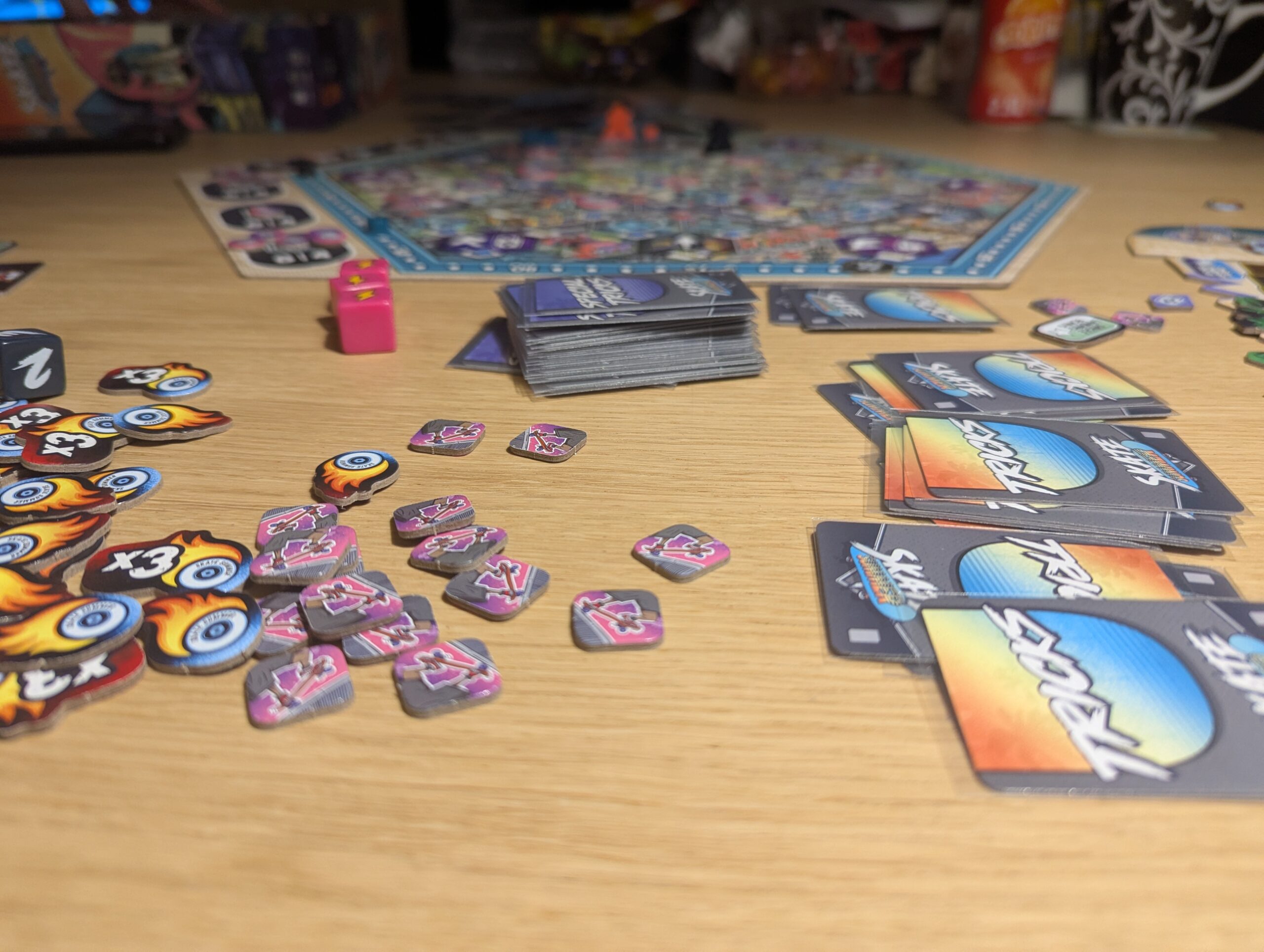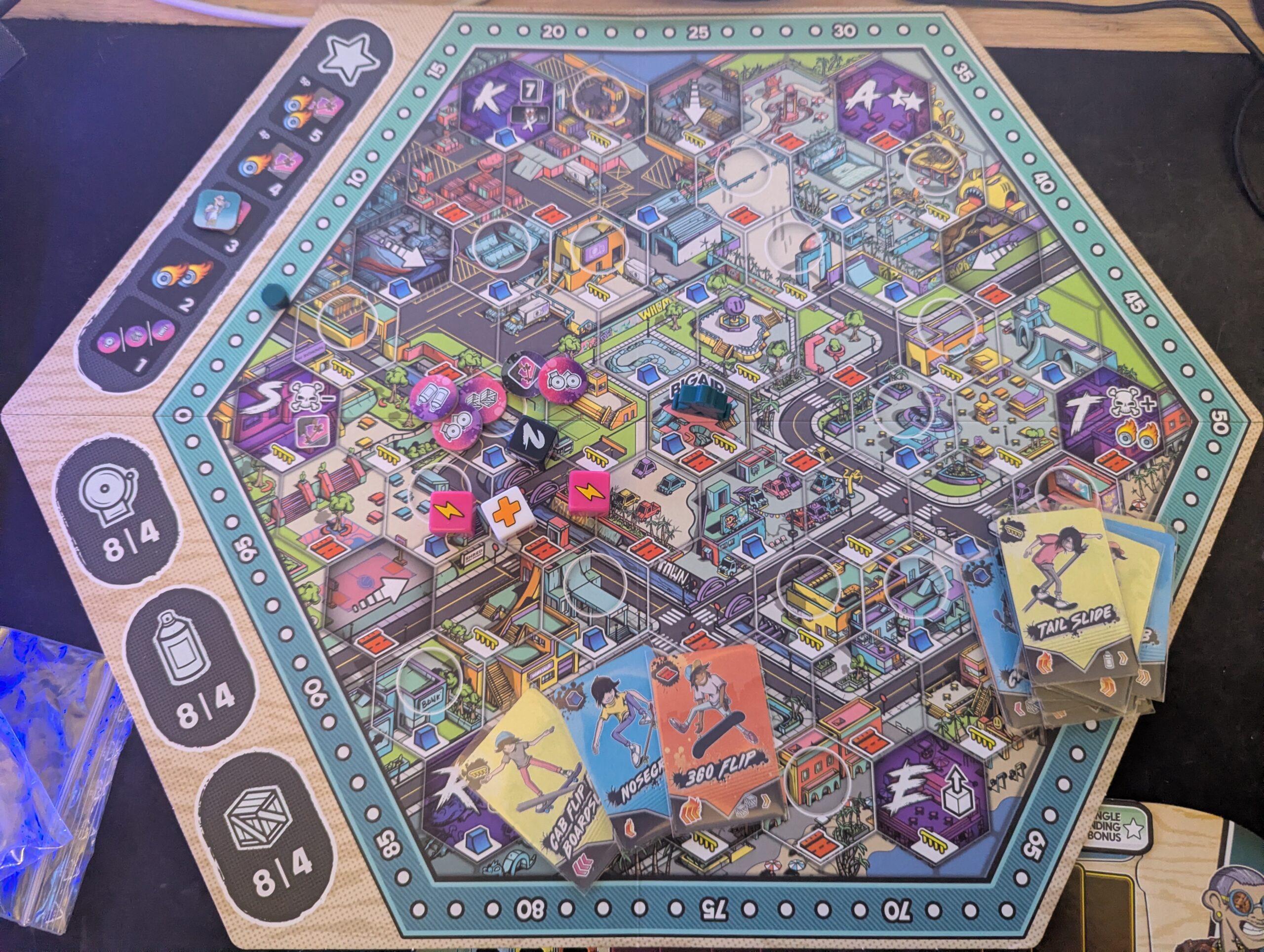
This time a topic, which was only briefly interesting for me when I was still in primary school, how does it work in a boardgame?
I don’t even need to mention I never did any more challenging trick than a simple Ollie in real life and even that had a 50% chance of fail.

Skate Summer
Components
This game also had a Kickstarter version however, the one I played was the standard retail one. This meant I was missing some monster skaters and plastic tokens, but there is no real benefit to those in the game. However, the box feels like it was designed for that version, with many storage spaces that you can’t fill (unless there is an expansion I am unaware of). Even so, the game board and all of the components have their own space and don’t move around in the box, which is a plus.


There are two types of cards, both of the same size and quality:
- Mini American cards – great thickness (0.34mm), with mediocre art, in my opinion.
There are around 150 cards in total. You probably won’t shuffle them too often, and knowing what’s coming next is not a real advantage (maybe a bit in special tricks). Also, using them in sleeves is a bit harder since you need to place them on your board one on top of another, which means they can slide off.


The rest of the components are pretty standard. You have some cardboard tokens for additional actions or collectibles and some dice for balancing. None of them are actually anything special, apart from maybe the flame tokens with their design.


Set-up
Game setup is quite fast and took us at most 10 minutes. After putting some tokens on the game board, all that’s left is to organize each player’s game area, which they can do by themselves, especially if you organize a bag of components for them in the box. Most of the space on the table is actually used by the players’ game areas, since not only are the player boards big, but you also need space around them for tokens, cards, etc.

Rules
The rules for the game are quite simple, as is its design, and it will take no longer than 10 minutes to get a new person familiar with them. The skaters don’t really introduce anything new to the game, meaning apart from the general rules, there are no skills or other things to learn. There are also not that many collectibles (or “goals” as they are named in the game), and apart from the special ones that give you an additional move, they do nothing until the end of the game, where you simply count who has the most. However, since the rulebook is picture- and example-heavy, it’s quite long (16 pages).
Gameplay
The gameplay time on the box is 45-60 minutes, which was almost never the case for us, it was slightly longer in 2- and 3-player setups, around 75 minutes. The game consists of two main phases (even though there are 4 in the rulebook): a trick phase when everybody plays together, and a movement phase of moving across the board in the order decided by the time spent doing tricks. There are no interactions between players apart from stealing tokens from the map.
Every round, you try to continue your combo for as long as possible without falling out of balance, left or right. To do that, you play tricks each round, which move your balance token along your player board while also getting you currency and other collectibles. However, no matter how good you are, it’s mostly dependent on luck. You can be on the edge every time, with dice moving you in another direction or not at all. This is also basically the only comeback mechanic this game has: you need to be greedy, hoping to play one more round than your opponents. However, if you do and fail, you lose one played trick and flame tokens, which could potentially put you in even more trouble. Because of that, in most games, no one really did this, and the games slowly turned into one person being in the lead. Of course, some collectibles on the map and the tricks can also help you come back, but if you get behind in the beginning, it was almost always over in our games. You can always decide after a round to “land” and end the combo, getting some additional rewards for not failing and picking your place for the move round.

After that, there is the upgrade phase, which is also done simultaneously. Here, you can upgrade how many points you receive for each trick and then proceed to score your combo based on the trick symbol/color.
Next, we have the move phase, where you use your tricks again to move. Each field on the board has a corresponding trick symbol, meaning you can only move there if you played a corresponding trick this round and have as many moves as trick cards. That’s why living on the edge can help you catch up or run away from others. Even one additional move can mean collecting another token or one of the other objectives.
The last phase is cleanup, clearing the board for the next round.
The game supports 2 to 5 players. I’ve played it with 2 and 3 players, and it was definitely better with more. I would even say that a full house would feel much better, since the longest phase of the game is the trick phase, which is done simultaneously as previously mentioned. With more players, there are more combinations regarding which route to take on the board to steal some of the collectibles.
Score
- Overall 5/10 – An OK game. I might play it again however, I am not a fan of the topic or the gameplay.
- Coming back 3/10 – There is not much variety between the games: no special powers of the skaters, nor any special upgrades that would make you change the way you play
- Fun factor 4/10 – It was quite fun, especially when the combo was going and going, but you are basically playing roulette, so as in a casino, it only lasts while you win.
Will it stay or go? – Fortunately, this wasn’t my copy, since this one would be a “go”.
